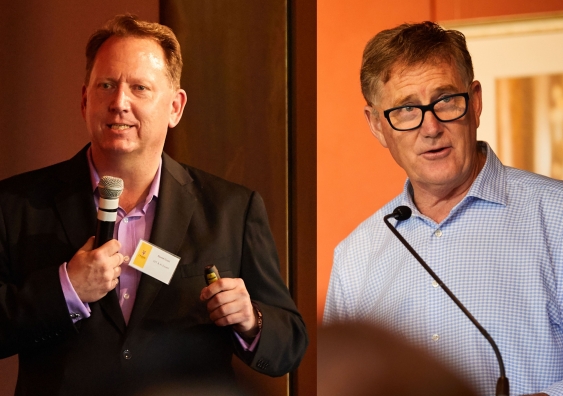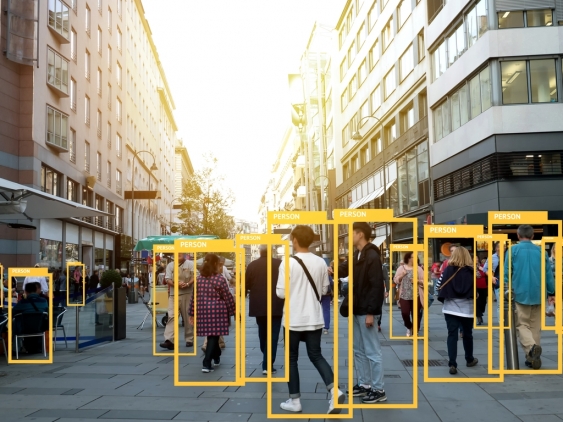Where is the future of innovation headed?
Artificial intelligence has changed the way that people do business, but does it mean that it will eliminate jobs?
Artificial intelligence has changed the way that people do business, but does it mean that it will eliminate jobs?

“Did you know that more data has been recorded in the past 18 months than in the entire history of mankind?” David Goad, Specialist in artificial intelligence (AI) and Internet of Things (IoT) asked a room full of industry professionals, government experts, consultants and academics at the UNSW’s Future of the Sydney Innovation System conference last week.
AI is not new. In fact, it has been around for over 65 years. The only difference is that now scientists have a much wider availability of data to feed into AI models.
“AI has enabled us to build models of reality which allow machines to act more like human beings both in reasoning and in interaction,” Goad explained.
“Today, we finally have a cost-efficient way to store transfer and compute a massive amount of data. Each dollar will buy you twice the CPU power every 18 months, twice the storage capacity every 12 months, and twice the communication bandwidth every nine months.”
Why is AI so relevant now?
The extent of available data can provide us with a more personalised experience as AI can digest more data than a human.
There are also various applications that AI can be used for. An example is how American Express processes more than 1 trillion transactions with AI and can perform pattern recognition to identify potential fraud.
“AI can be exceptionally useful especially since humans are not consistently great decision makers. Whether we like it or not, we still have cognitive heuristics and confirmation biases. Most people can also not process more than five things in their short-term cognitive memory in the event of an emergency,” Goad said.
This is where AI can be used to our advantage and improve our everyday life. Goad further explained why AI is at the forefront of many business decisions:
What are the types of AI?
AI can be divided into two different types: artificial general intelligence (AGI) – that can accomplish sophisticated cognitive tasks just like the human mind would; and narrow AI.
Narrow AI has already found its way into everyday software and applications such as Amazon’s Alexa, Netflix’s movie recommendation engines, autonomous cars, drones, Roomba vacuums, finance and portfolio management and health care diagnosis.
While narrow AI is currently performing really well, AGI is expected to take place anywhere between 2030-2100.
“Some people worry that we can create artificial intelligence that can surpass humans. However, we are still decades away from AGI,” Goad affirmed.

Machine learning analytics enabling facial recognition technology. Image: Shutterstock
The uncomfortable truth
According to research conducted by Cisco, at least 40% of businesses will die if they don’t accommodate new technologies. This prediction calls for the need for a deeper understanding of such technologies.
“The world of data, technology and innovation is absolutely here to stay,” entrepreneur Stephen Porges said, referring to online banking, digital driver licences and My Health Records as examples.
Goad further emphasised on the importance for business leaders to understand where technologists are coming from in order to safeguard the longevity of their business.
“The potential for data capture with new technologies is actually moving far faster than regulations can. Either you have to understand technology, or you have to be in a position where you can create an organisation that can understand technology for you and adapt to that.”
This is further supported by research conducted by Gartner which indicated that:
Such statistics clearly support predictions that technology will be heavily embedded in businesses in the near future.
Disruption or innovation?
“What I'm finding more and more these days when we talk about disruption, is that technology is starting to drive change,” Goad said.
However, to better understand how technology influences us, a clear distinction needs to be made between digital transformation and digital optimisation.
“Digital optimisation is where you, as a businessperson, are using technology to improve your existing business model, improve performance, reduce costs and improve customer service. Digital transformation on the other hand, is where you're using technology to drive new business models and new revenue streams,” Goad explained.
According to Porges, “being always switched on is killing creativity” and it is only when we allow ourselves to be bored that our minds seek to engage in more creative solutions to the problem at hand.
“That's not just a generational issue. I actually think it is also a business issue that we have to start encouraging within our businesses, a lot more cross-functional work, a lot more communication between the cross functions.”
Porges further shared that people should not be crucified for their failures, but instead encouraged to take a chance at putting an innovative idea forward and learn from their mistakes.
“Today, there is a lot of talk about innovation. If you find a slightly better way of doing things, that's innovation. In comparison, disruption is when you are looking at massive amounts of data. Usually, you have to bring in an AI engine in the background because you won't be able to analyse the data yourself and you will have a natural bias as to what you look for.”
For disruption to take place, it is important for companies to not solely rely on customers’ opinion.
“As Henry Ford said – if he listened to his customers, they would have just asked for faster horses. Similarly, if we spend our time listening to our customers, we would just build better versions that we never thought we now have – which is not actually disruptive.”
What about the future of jobs?
AI, IoT and blockchain have changed ways that people do business. In fact, AI occupies the top three of the top 10 technology trends. However, one of the concerns that most people have around AI is the elimination of jobs.
“AI will impact most jobs, not just manual jobs. However, it's not going to cause job losses but instead cause the elimination of tasks,” Goad said.
According to research conducted by McKinsey, over the course of the next 10 years, there will be more jobs created than destroyed.
“AI does not destroy jobs. What it does is automate tasks. We all, regardless of what we do, have tasks in the everyday work that we do. However, 80% of jobs will experience some form of task automation. In order to have the same growth and standard of living, we actually do need to have automation.”
On this note, Porges called for an environment where people are able to take advantage of the new economy and for the government to step in and make digital literacy accessible to all.
“It's not just the domain of the young or the newly educated. The provision of training and data and digital literacy has to be encouraged and available at all levels of the community and without the knowledge and the ability I firmly believe that without the data literacy, you are going to be as isolated. I think the government can actually play a huge role in providing that education.”
About our speakers
David Goad has extensive practical experience in information technology and business strategy having started up his own successful technology business which won 12 national and international awards before it was sold. In his career, Goad has had senior roles with well-known technology organisations such as Hitachi, KPMG, and Microsoft. Goad currently lectures part-time at UNSW in innovation, technology, strategy and new business start-up. Concurrently, Goad also provides personalised consulting and advisory services to entrepreneurs and enterprises in the areas of technology and business strategy. Goad’s specialities are AI and IoT where he is a published author. Goad has practical consulting experience in Machine Vision, Natural Language Processing and Conversational Agents and has worked with a variety of AI technology platforms including Google and Microsoft.
Stephen Porges is an experienced Chief Executive, board member, entrepreneur and mentor. He has a broad background across banking, technology, real estate, mortgages and alternative finance, biotechnology, marketing, agriculture, data and compliance. He has operated in private, public and government sectors and is currently advising companies in the data, finance, regulatory and anti-fraud sectors.